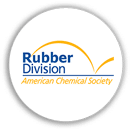Understanding ASTM D543: Evaluating the Chemical Resistance of Plastics
ASTM D543 is a standardized test method used to assess the resistance of plastics to chemical exposure. This test evaluates how different plastic materials react when exposed to various chemicals, including acids, bases, solvents, and other corrosive substances. By measuring changes in weight, appearance, tensile strength, and other properties, ASTM D543 helps manufacturers and engineers determine the suitability of plastics for specific applications where chemical exposure is a concern.
Importance of ASTM D543
Plastics are widely used in environments where they come into contact with chemicals. Understanding how these materials respond to different substances ensures product safety, durability, and compliance with industry standards.
Key Reasons for Chemical Resistance Testing:
-
Material Selection: Helps engineers choose the right plastic for applications involving chemical exposure.
-
Product Durability: Prevents material failure in chemically aggressive environments.
-
Regulatory Compliance: Ensures plastics meet industry requirements for chemical resistance.
-
Quality Control: Identifies material inconsistencies that could affect performance.
How ASTM D543 Works
The test exposes plastic samples to various chemical environments under controlled conditions to evaluate their physical and mechanical changes.
Testing Procedure:
-
Sample Preparation: Plastic specimens are prepared and measured before testing.
-
Chemical Exposure: Samples are immersed in specific chemicals for a predetermined time at a controlled temperature.
-
Post-Exposure Evaluation: After chemical exposure, specimens are examined for changes in weight, appearance, strength, flexibility, and other properties.
-
Data Analysis: Results are compared to untreated samples to determine the degree of chemical resistance.
Applications of ASTM D543
This test method is widely used in industries where plastics are exposed to chemicals, ensuring product reliability and performance.
1. Medical and Healthcare Equipment
-
Ensures plastic components in medical devices and laboratory equipment withstand exposure to disinfectants and cleaning agents.
2. Automotive and Aerospace
-
Evaluates the resistance of plastic components to fuels, lubricants, and other automotive fluids.
3. Chemical Storage and Handling
-
Assesses the suitability of plastics used in tanks, pipes, and containers for storing aggressive chemicals.
4. Construction and Infrastructure
-
Tests the durability of plastic coatings, seals, and structural components exposed to harsh environmental conditions.
5. Consumer Products and Packaging
-
Determines whether plastics used in packaging can resist exposure to household chemicals, detergents, and solvents.
Benefits of ASTM D543
-
Enhances Material Longevity: Helps prevent degradation in chemically harsh environments.
-
Improves Safety and Performance: Ensures that plastic components maintain structural integrity when exposed to chemicals.
-
Optimizes Manufacturing Decisions: Aids in selecting the right polymer formulations for specific applications.
-
Reduces Product Failures: Identifies potential weaknesses in materials before they are used in real-world conditions.
Challenges and Considerations
-
Chemical Variability: Different chemicals can affect plastics in unexpected ways, requiring extensive testing.
-
Test Duration: Some chemical effects may take time to manifest, requiring long-term studies.
-
Environmental Conditions: Factors such as temperature, humidity, and concentration of chemicals can influence test results.








